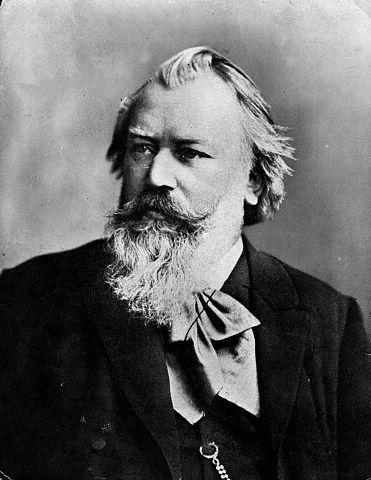You are here
Brahms' Symphony No. 3, a Subtle Masterpiece
The Evanston Symphony leads off 2015 with a dazzling program of late Romantic classics, starting with Brahms’ treasured Symphony No. 3 in F Major.
Of Brahms’ four symphonic masterworks, the Third stands apart. It is in many ways the most personal, referencing in its opening theme Robert Schumann’s Rhenish Symphony. Schumann was Brahms’ first champion, proclaiming in print that the then 20-year-old composer was “destined to give ideal expression to the times.” The Third is also the shortest of Brahms’ four symphonies and, perhaps unique in the symphonic canon, each movement ends quietly. In several key moments the notes infer the initials F-A flat-F, a shorthand for frei aber froh (free but happy), the lifelong bachelor composer’s motto.
According to Maestro Lawrence Eckerling, the ESO’s music director, Brahms’ Third is the hardest of the four symphonies to conduct, for both musical and emotional reasons. “First, it generally must be conducted in two [beats], though a slow two,” he says. “That requires the players to accurately subdivide six in their minds, giving conductors less control and putting more responsibility on the players. Second, it generally has a more sublime sensibility overall, requiring a rounder, warmer sound in many more places than other Brahms. It means that it requires more musical maturity.”
Nevertheless, at its premiere on Dec. 2, 1883, the symphony received the greatest reception of the four, surprising in view of a piece “…so subtle in its discourse, so reticent in its tone of voice, and moreover, so difficult to perform,” wrote Michael Steinberg in his book, “The Symphony: A Listener’s Guide.”
For all its subtleties, the work is full of Brahms’ trademark passion, glorious melodies and rich harmonic writing. His friend and influential music critic Eduard Hanslick wrote: “Many music lovers will prefer the titanic force of the First Symphony; others, the untroubled charm of the Second, but the Third strikes me as being artistically the most nearly perfect.”
Watch the wonderful third movement here.
In addition to the Brahms Third Symphony, the ESO will perform Richard Strauss’ magnificent Four Last Songs with soprano Michelle Areyzaga, returning for her third appearance with the orchestra, as soloist. The program will conclude with Wagner’s powerful Overture to Tannhäuser. The concert is scheduled for 2:30 p.m. Sunday, Feb. 1 at Pick-Staiger Hall in Evanston. For information and tickets, call 847-864-8804 or visit evanstonsymphony.org.

Johannes Brahms